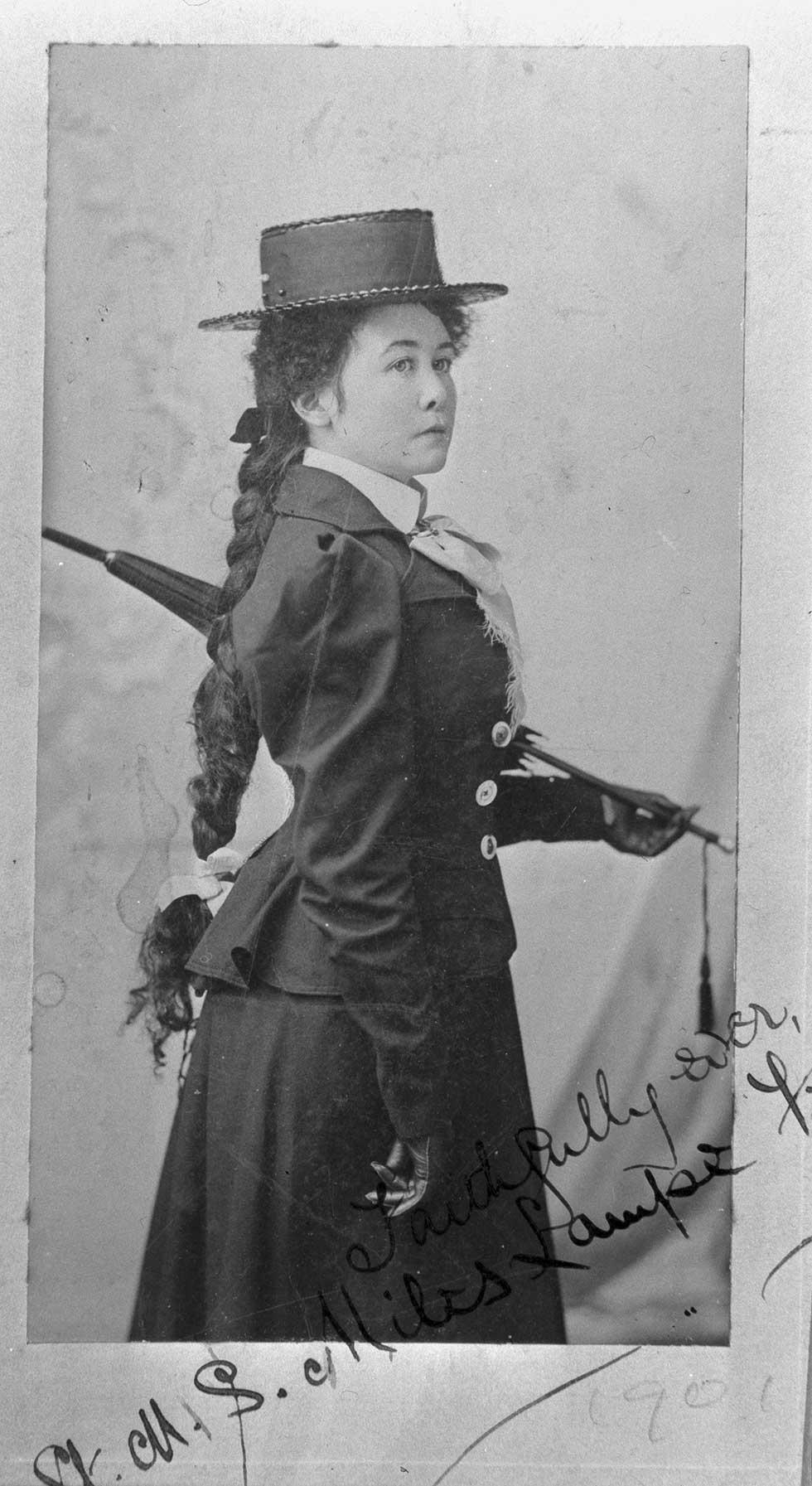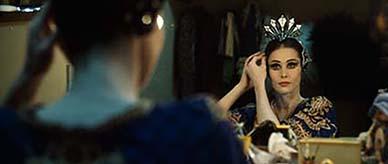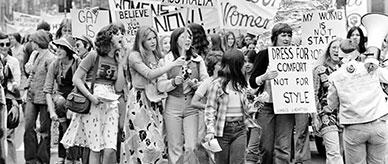


About this record
This is a black-and-white mounted photograph showing a three-quarter-length portrait of Miles Franklin (1879–1954). She is dressed in a dark, tailored suit and is standing side on to the camera, facing to the right. Her head is turned towards the camera and she is holding a dark parasol under her left arm, military-style. A single thick plait reaches below her waist and is tied at the end by a light-coloured bow. She is wearing a dark boater-style hat squarely on her head. Indistinct words are written in ink across the bottom of the photograph and mount. The date '1901' is written in pencil in the bottom right-hand corner of the mount.
Educational value
- Shows a picture of Miles Franklin around the time her first novel, My Brilliant Career, was published – the book, which was published in Britain to critical and public acclaim in 1901, was seen as an embodiment of Australian life in which a young woman in the outback is torn between marrying a local landowner and pursuing her career as a writer.
- Shows an image of Stella Maria Sarah Miles Franklin – after many rejections from publishers, Franklin shortened her name to the gender-neutral 'Miles' in the hope that her novel would fare better if it were thought to have been written by a man; Franklin was annoyed when Henry Lawson (1867–1922) revealed her gender in his foreword to the book.
- Shows a woman who was passionate about literature and writing, who wrote assiduously, if not always successfully, throughout her life, using her own name and the pseudonym of Brent of Bin Bin – Franklin ensured continued support of Australian literature by bequeathing her estate to establish the Miles Franklin Literary Award for the best novel or play of the year presenting 'Australian life in any of its phases'.
- Shows Franklin at a time when she was becoming well known in Australian literary and social circles, meeting and befriending writers such as AB ('Banjo') Paterson (1864–1941) and Joseph Furphy (1843–1912), and feminists such as Rose Scott (1847–1925) and Vida Goldstein (1869–1941) – following her feminist inclinations, Franklin worked from 1906 to 1915 for the National Women's Trade Union League in America and from 1919 to 1926 for the National Housing and Town Planning Association in London, where she maintained her focus on women's rights.
- Depicts Franklin wearing her hair in a long plait down her back, though Edwardian fashion demanded that young women eligible for marriage wore their hair up.
- Shows how Franklin dressed in the daytime during the first decade of the 20th century in order to appear fashionable – by 1900, the tailored suit was firmly established, as women, who had entered a changing, more commercial, workplace, found it a useful all-purpose outfit; women seemed to be making a statement that they deserved and wanted more independence in the future, although they encountered some resistance from men who saw the fashion as representing a challenge to their authority.
- Shows an example of a formal, posed photograph, more typical of the 19th century when photographs were taken by experts and involved long exposure times – most photographers asked their subjects to pose stiffly in front of a backdrop and look at the camera, while they took full– or three-quarter-length pictures; in the 20th century, photography became more accessible to the public through Kodak cameras and roll film, and formal poses became less common.
Acknowledgments
Learning resource text © Education Services Australia Limited and the National Archives of Australia 2010.
Related themes
Need help with your research?
Learn how to interpret primary sources, use our collection and more.


